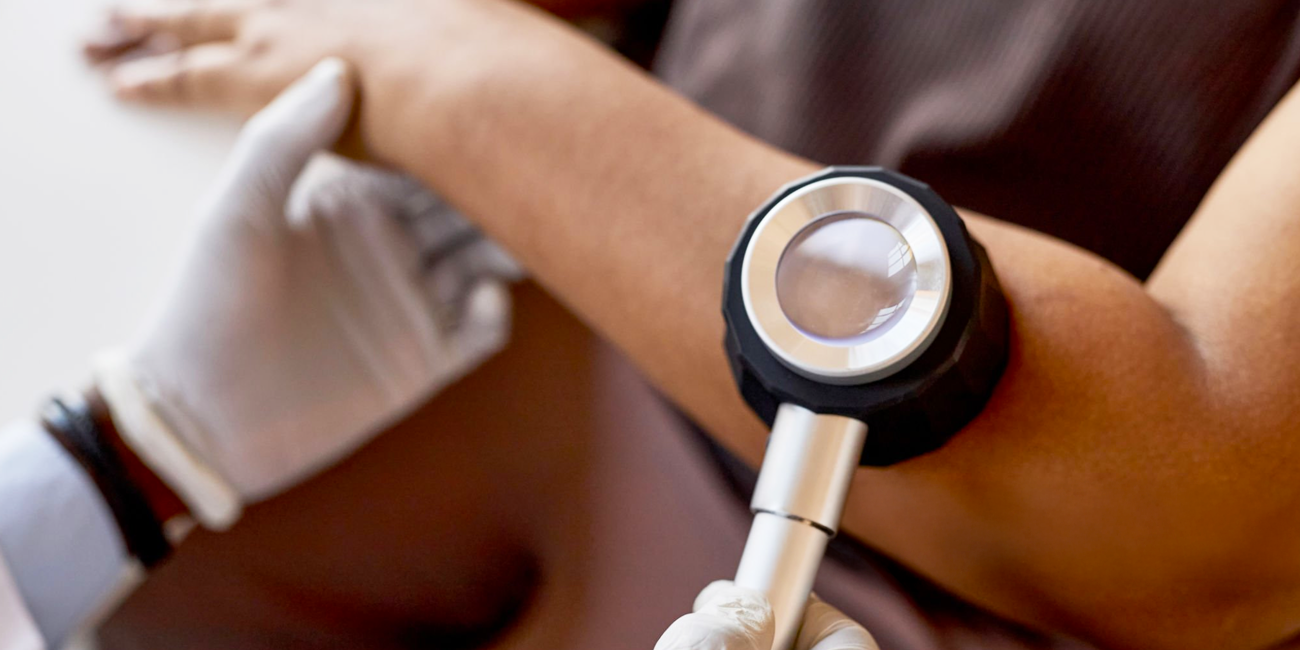
Book a Consultation
Thank you!
Your form has been sent successfully.



March 25, 2021
The new year often brings aspirations for a healthier, stronger you. A cancer diagnosis should not stand in the way of these goals! Adding some exercise or other physical activities is a great and simple start towards a healthier you. Even those who were not active before their cancer diagnosis can benefit from the improved physical and mental health that comes from exercise.
Those diagnosed with any condition, including cancer, should always consult a physician before starting any new exercises, diets, or other activities. Even if you were extremely physically active before treatment, some side effects and other concerns may determine what is safe for you. While it has been proven that it is safe to exercise with certain types of cancer treatments, your ability to and the types of exercise to try depend on lots of different factors, including:
The side effects that you may be experiencing will determine the exercise plan that is right for you, so make sure to check with your doctor!
It is always important to take precautions to exercise safely, especially when diagnosed with cancer. These are just a few ways to make sure you are safely getting the most from your exercises.
A lot of us believe that we need access to a large gym to be able to exercise, but you can exercise anywhere! In fact, it is often better for those undergoing certain cancer treatments, which can weaken the immune system, to stay away from public gyms. Germs tend to be everywhere in large gyms and spread easily for those with healthy immune systems, so those with weakened immune systems are better off to find ways to exercise at home.
Water is what keeps the body functioning for everyone! Dehydration is very common in those going through cancer treatments. During cancer treatments, water is also important because it helps to regulate your temperature, not to mention flushing toxins and other waste from your body. While exercising, your body uses more water, so make sure to keep a water bottle handy and drink up!
Believe it or not, your body will tell you what it needs. When your energy levels are low, don’t push yourself too hard. Adjust your exercise length and how difficult the exercises are to better accommodate you until you feel better! Listen to your body! It’s only trying to help!
There is no need to rush in your physical fitness journey. Even if you were physically active and strong before you began treatment, it can take time to build back up to that activity level. Taking it slow and not forcing your body into difficult exercises will help you prevent injury and also keep you on the right track. If a 30 minute workout seems out of reach, break it down into smaller 10 minute sessions. Don’t get discouraged at your pace! Everyone is different!
Do you have someone you enjoy spending time with? Ask them to be your exercise buddy! Not only is it safer to exercise with someone else, it is also motivating. Together, you can support one another and insure someone is nearby, just in case anything goes wrong. Everything is better with a friend!
Eating a healthy and balanced diet is essential for a healthy body. After exercise, your body needs food that is high in protein to help recover. Talk to your doctor about what foods you should be eating, or ask them about talking to an oncology dietitian, who can help you find the nutrition plan that is just right for your recovery and treatments.
Jeez, another reminder about my doctor. Don’t I talk to them enough? While this may seem repetitive, talking to your doctor and keeping them informed is essential for anyone diagnosed with cancer. Throughout treatment, your health can change and it is important to keep your doctor in the loop with any activities you may be trying. Many health indicators, such as your blood count, will help your doctor determine if and how it is safe to exercise.
Using a variety of different exercises is the key to not only be successful, but to choose a safe exercise program. A complete program should involve all of the topics listed below but, keep in mind, you may be limited by certain health restrictions. No need to worry though! Every little activity helps and something is better than nothing.
Many of those diagnosed with cancer suffer from shortness of breath and difficulty breathing. Since most types of physical activities result in a little heavy breathing, this can prevent them from exercising. Breathing exercises work by improving the way you draw in and release a breath. They can also help with stress and anxiety. The best part about breathing exercises? They can be done anywhere and don’t take much time out of your day!
Try this simple breathing exercise to begin.
Equal Breathing, otherwise known as sama vritti, is a breathing exercise that focuses on keeping your inhales and exhales the same length. This can be done in a seated position, so whether you do this at work, lounging on the couch, or during yoga, this breathing exercise is easy to fit into your daily schedule.
It is important to find balance in all areas of your life, especially the balance found in your feet! Those diagnosed with cancer are often effected by a loss of balance. Being unsteady on your feet can lead to falls and broken bones, so it is important to work on these problems. Balance exercises help you regain the function and mobility needed for everyday activities. Along with keeping you on your feet, they also strengthen your body and increase coordination. There are many balance exercises, so it should be easy to find one to suit your needs.
Try this simple balance exercise to begin!
Rock the Boat is a great balancing exercise to help keep you active, improve coordination, and prevent falls! Best of all, you can do this exercise anywhere you can stand up. If you are unsteady on your feet, use a chair or ask a friend to help you balance.
Cancer and its treatments can often make the body feel stiff and limit your range of motion. Stretching is a great way to improve your flexibility and can even help your body repair itself! It helps to increase the blood and oxygen flow throughout your body and help to calm you down. Stretching after surgery can also help to break down scar tissue!
Try these simple stretches to begin!
Lower Back Stretch is a great stretch for your—lower back—duh. Best of all, this is a stretch that is meant to be sitting, which is a great option if you are unsteady on your feet. Plus, who doesn’t enjoy a good back stretch?
Pectoral and Biceps Stretch is a great stretch, allowing you to stretch two muscle groups at once! This stretch is best done standing, but the use of a chair can add some balancing help if needed.
When someone who is undergoing cancer treatment is less active, muscle loss is a common side effect. Many cancer treatments also cause muscle weakness. Strength training, also known as resistance training, works by helping to maintain and build stronger muscles. Strength training also helps to improve your balance and reduce fatigue, making daily activities easier. Strength training doesn’t have to involve access to a gym with exercise machines. Hand weights, resistance bands, and even your own body weight are more than enough to get in a great workout.
Try this simple strength training exercise to begin
Lunges are an exercise that the majority of us are familiar with. Lunges help to strengthen most of the lower half of your body, including your quadriceps, hamstrings, and gluteus maximus. Plus, this exercise can be done next to a wall or chair to help with balance.
Sometimes referred to as cardio, aerobic exercises are a type of exercise that raises your heart rate. Not only do these exercises increase your endurance, aerobic exercises strengthen your heart and lungs. Feeling a little less tired during and after treatments seems like an excellent pay off for just a little exercise!
Walking is one of the easiest ways to get some aerobic exercise. Doctors recommend that everyone gets 150 minutes of moderate exercise a week. While that seems like an intimidating amount, when you break it down, it is very manageable! Simply take a walk after dinner for 30 minutes and you’ve already done more than your recommended daily amount! Plus, taking a walk is a great way to aid in digestion!
If you are unsteady on your feet, swimming or water aerobics are other great options!
Exercise can seem like a daunting task for anyone, but it doesn’t have to be! Even those undergoing cancer treatments can get in some physical activities with ease. By breaking it down, talking to your doctor, and doing a few simple exercises a day, everyone can take a step towards starting this year stronger and healthier.
If you enjoyed this blog, check out our other blogs on cancer related topics. Follow us on Facebook and Instagram
Written by D. Maves


December 16, 2025
Hearing a HER2 gene mutation on a report can feel scary, but it also p...
KNOW MORE

December 16, 2025
Seeing a dark streak under your nail that doesn't fade or grow out can...
KNOW MORE

December 16, 2025
If you're worried that an itchy or stubborn rash could be cancer, you'...
KNOW MORE

December 16, 2025
Hearing that your CT scan shows a spot on your lung can be unsettling....
KNOW MORE

November 13, 2025
Food choices feel high-stakes during cancer care, and because of that,...
KNOW MORE

November 13, 2025
Ablation treats prostate cancer using energy such as heat, cold, elect...
KNOW MORE
